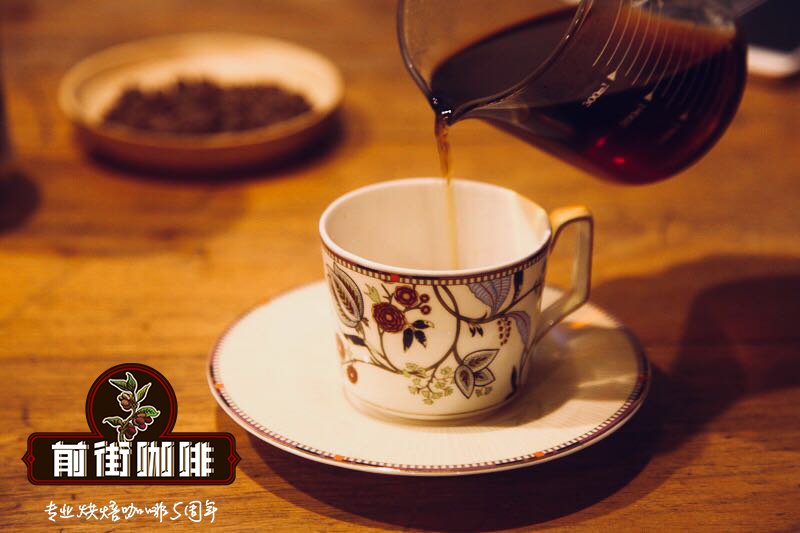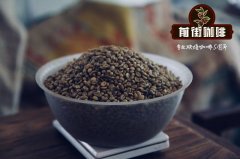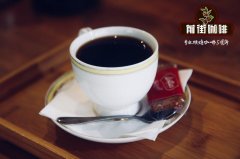Is the coffee made by hand sour? how to make coffee by hand so that it doesn't get sour? what's the trick?

Professional coffee knowledge exchange more coffee bean information please follow the coffee workshop (Wechat official account cafe_style)
Hand-made coffee is no stranger to many friends. It is different from the legal pressure and Philharmonic pressure we mentioned earlier in that coffee is no longer made through the principle of soaking, but through filter cups and filter paper, and water is produced through coffee powder. However, whether it is soaked or over-powdered by water, it is still extracted, that is, when the water comes into contact with the coffee powder, the substance dissolved in the coffee dissolves into the water. 、
First of all, the protagonist this time, coffee beans. Rwanda ranked seventh in COE last year. This time I use the more common way of fine grinding and fast water flow in Europe and the United States. There are two main reasons for choosing this way: 1, there are not many variables to be controlled, and water injection is relatively easy to control. two。 The taste will be lighter than traditional Japanese style. It is more acceptable for friends who are with coffee for the first time.
We need the ingredients of hand-brewed coffee.
20g fresh coffee beans
350g water
The hand coffee utensils we need
Grinder (manual, electric, relatively rough grinding)
Weighing instrument with an accuracy of 1g
Stopwatch (my weighing instrument already has a timing function)
Hand-made special pot, long and thin outlet, so it is easy to control the flow
Filter paper
The filter cup of Hario V60 please note that the mouth of this filter cup is very large. This facilitates the rapid passage of water, and the reason is later.
The mouth is relatively large, so it is convenient to pass quickly.
We use 20g coffee beans, because the coffee is ground into powder to volatilize quickly, so weigh good grams, after the preliminary work is done, the final grinding. When I boil water, I weigh the coffee beans first and the filter paper is ready.
We need 93 degrees of water (I know that the Japanese style will be about 85 degrees, which I will say later), because the boiling water is at 100 degrees. So pour from the hot kettle into the special hand-flushing pot, and then grind the powder, the temperature will drop in this general reference. Of course, there will be constant temperature water supply equipment in the coffee shop, which is mainly for families.
At this time, I will fully soak the filter paper in hot water. There are two purposes here: one is to warm the pot, and the other is that the filter paper smells more or less paper. It can reduce the smell of paper.
All right, the preliminary work of hand-made coffee is complete, and it's ready to grind. Relatively speaking, you can see that the scale is too rough after grinding.
However, compared with the traditional Japanese style, it is still on the thin side. As for how to adjust the degree of grinding to find the taste, it is also mentioned later.
The scale begins to return to zero and the time returns to zero. Our flow rate is guaranteed to complete all the extraction within 2 minutes-2 minutes and 30 seconds)
First steam with 60g of water for about 45 seconds. (the steaming process is completed in the 15th second and the 60th second) the steaming process is to release carbon dioxide from the coffee and begin to expand gradually, which is helpful for uniform extraction at a later stage. The bubbles in the picture indicate that the coffee beans are fresh and emitting carbon dioxide.
In the traditional Japanese style, some of the coffee steamed out will be filtered out. But here, we keep it. Because the initial part of the flavor (sour, because it is just beginning to extract) is to sum up with the later flavor.
Start injecting water. Because it is a conical design, the principle of water injection is to start from the thickest in the center and slowly draw the circle from the inside to the outside. Someone will pause when the extraction reaches 175g, and then continue to finish. If the flow rate is too slow, you can complete the water injection at one time, and you will find that the water will remain at a certain height. Because the velocity of launching and water injection will tend to be in the same balance. That's why I chose the big hole when I mentioned V60 earlier. The launching speed of the keyhole will be slow, and you need to have a pause and secondary water injection process. But in any case, I won't put too much emphasis on the technique here. Because from the inside out, and in 2 minutes-2 minutes 30 seconds to complete the water injection, you can adjust the speed, at this point, you can control a lot.
At 350 g, stop the water injection, and all the water in the filter cup falls into the water. (another one is different from the Japanese style, because the Japanese style begins to turn white and stop injecting water. And this part is not needed, it can be regarded as the part of excessive extraction. I will explain the reasons later in this part. )
After extraction, if the bottom is relatively flat, it means that the extraction is relatively uniform. If high and low, it means that some coffee passes through a lot of water (low), and some coffee passes through less water (higher). If the bottom area is narrow, it means that the utilization rate of coffee powder is not high.
You can drink it.
Rwanda COE Lot 7, which tastes clean, has a mild sour taste, but it is very sweet.
I don't have a warm cup, which will be discussed in combination with the differences in the previous Japanese style.
Important Notice :
前街咖啡 FrontStreet Coffee has moved to new addredd:
FrontStreet Coffee Address: 315,Donghua East Road,GuangZhou
Tel:020 38364473
- Prev

What do you recommend for Mexican coffee beans? Mexican coffee beans taste good.
Professional coffee knowledge exchange more coffee bean information please follow the coffee workshop (Wechat official account cafe_style) in the field of coffee, the higher the altitude, the better the coffee quality. At present, many coffee beans billed as Arabica on the market are not really from high altitude, while Caf Altura Mexican coffee organic coffee is a pure Arabica variety and is grown in the high sea.
- Next

Quickly learn the basic principles of hand-brewing coffee and explain the skills
Professional coffee knowledge exchange more coffee bean information please follow the coffee workshop (Wechat official account cafe_style) hand-brewed coffee principle we still need to return to the essence, extract
Related
- Beginners will see the "Coffee pull flower" guide!
- What is the difference between ice blog purified milk and ordinary milk coffee?
- Why is the Philippines the largest producer of crops in Liberia?
- For coffee extraction, should the fine powder be retained?
- How does extracted espresso fill pressed powder? How much strength does it take to press the powder?
- How to make jasmine cold extract coffee? Is the jasmine + latte good?
- Will this little toy really make the coffee taste better? How does Lily Drip affect coffee extraction?
- Will the action of slapping the filter cup also affect coffee extraction?
- What's the difference between powder-to-water ratio and powder-to-liquid ratio?
- What is the Ethiopian local species? What does it have to do with Heirloom native species?

